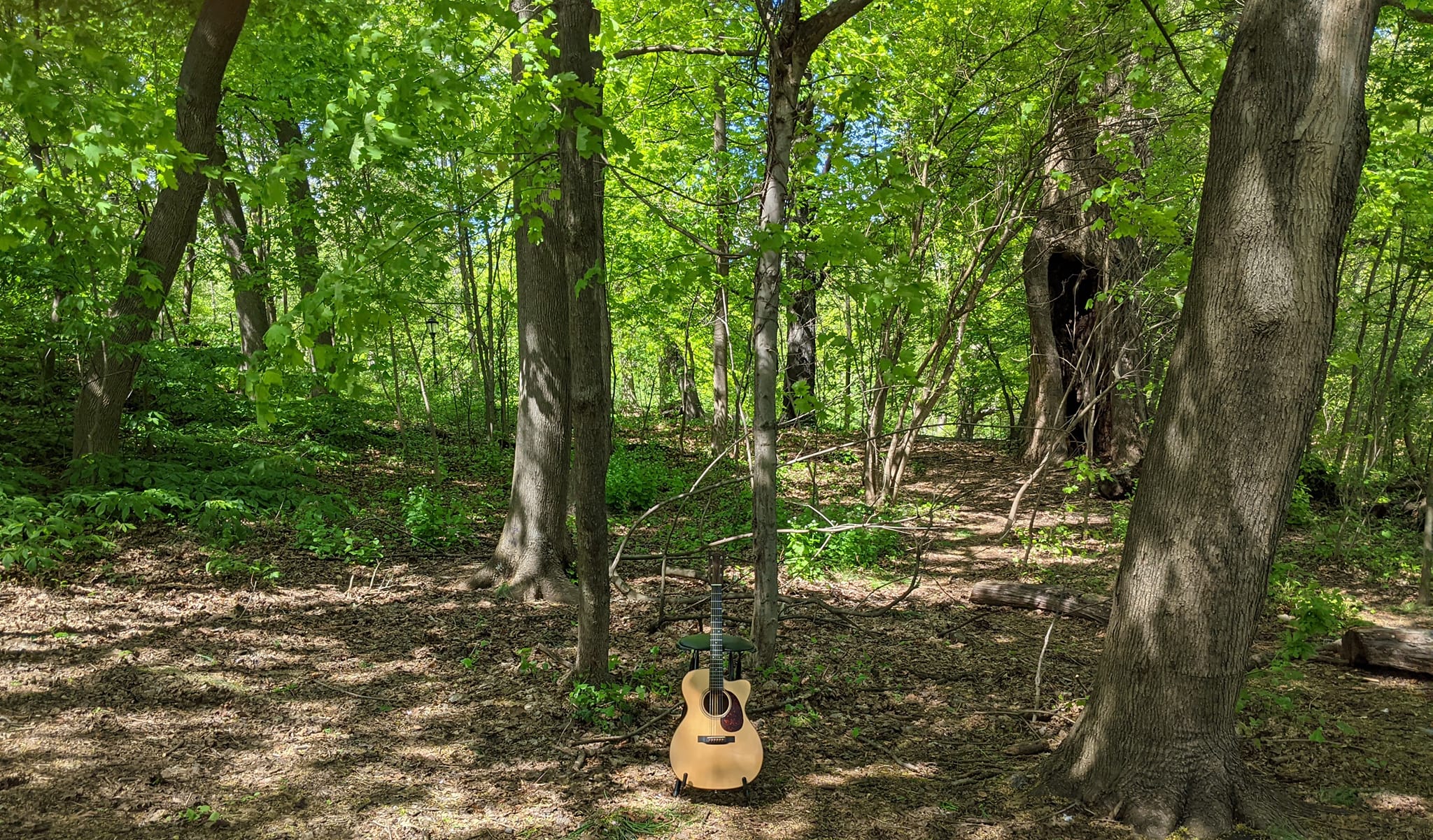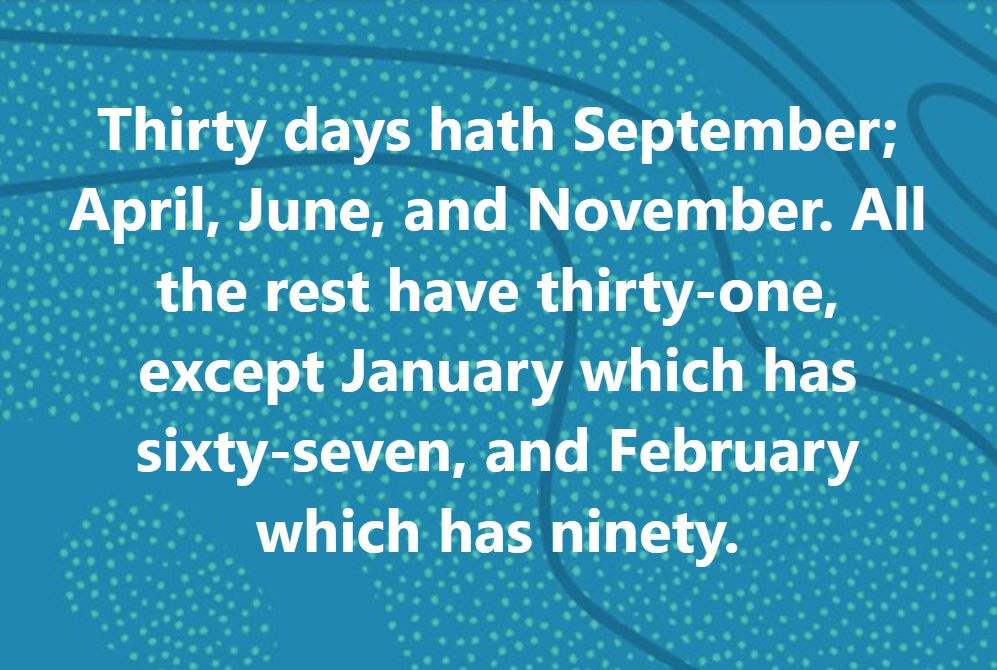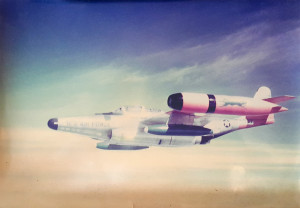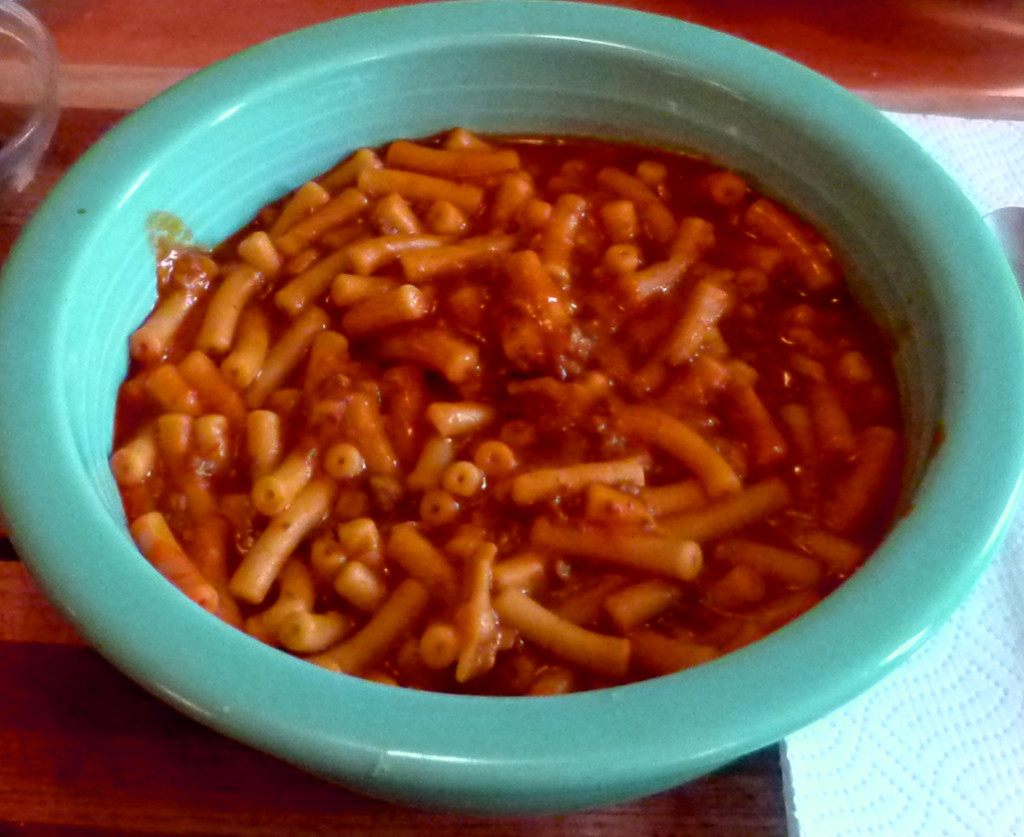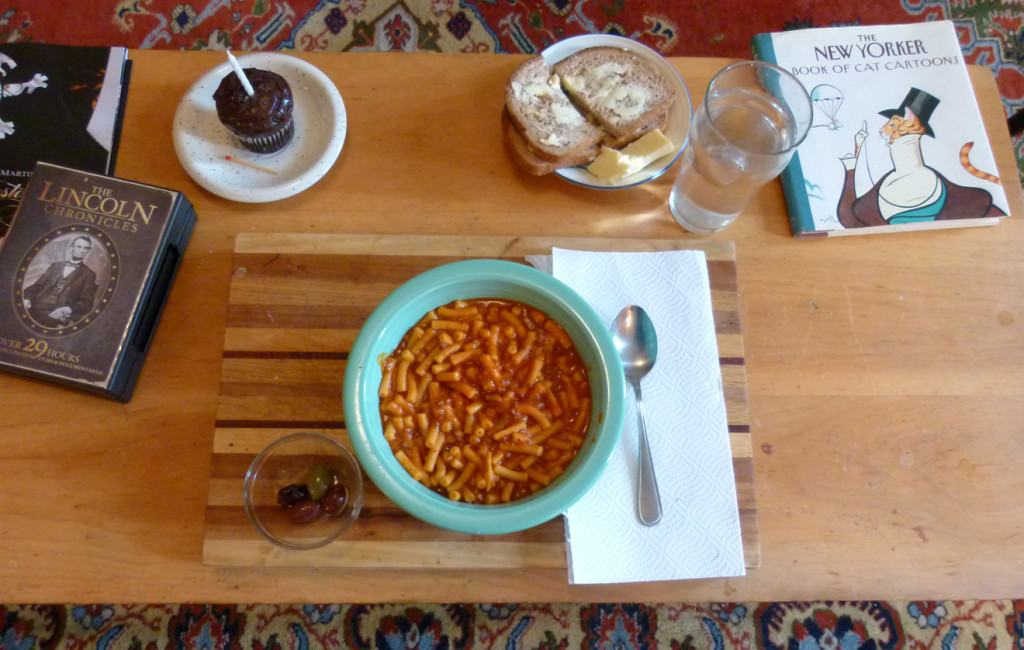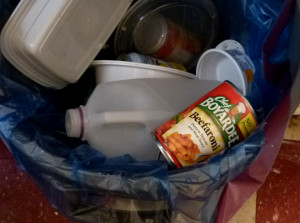Blog
Armistice Day
My annual update of the piece I wrote for Veterans Day and why we shouldn’t forget its original commemoration.
Anyone who went to war will have their own personal sacrifice to live with, if they were fortunate enough to live through it in the first place. One does not have to serve in a front line unit to end up in harm’s way, but only the veterans who served in actual combat know the full measure of such service. And yet, we can all know that such events give good reason to mark the end of wars, lest we forget what happens in them.
That fact has never been more important than right now…
U-S-A! U-S-A!! U-S-A!!! Soccer at It’s Finest
U.S. Women Defeat’s Canada 1-0 in CONCACAF Final
A hard-won trophy and a ticket to the 2024 Olympics
The USA’s Women’s National Team won the CONCACAF Championship trophy yesterday, defeating a tough Canadian squad 1-0 to earn their way to the 2024 Summer Olympic Games, in Paris. This will be the USA women’s team’s 8th Olympics!
Golden Ball winner Alex Morgan made good on the all-important penalty kick in the second half to break the exciting and at times gut-wrenching match. It was Morgan’s third goal of the tournament. While the men’s team continues to improve in their efforts to erase the humiliation of missing the last World Cup, there is little doubt that the best soccer team in America is of the opposite sex. Congratulations, ladies!
T Spoon Phillips’ Spoonville reunion
May 17, 2022 – Pangea Supper Club, New York City
T Spoon Phillips joined on stage by Doug Pierson and Rob Meador to play some Spoonville tunes for the first time in 15 years!
More at tspguitar.com
Baseball Rule Change for 2022 Will Have Lasting Impact
The New Mid-Fielder Changes Major League Baseball Forever
“Tenth player adds exciting wrinkle to America’s favorite pastime.” – MLB Commissioner Rob Manfred
Major League Baseball hoping the ‘Rover’ position, called a Short-Outfileder by some, will revive interest after COVID-19 and the recent lockout threatens revenues.
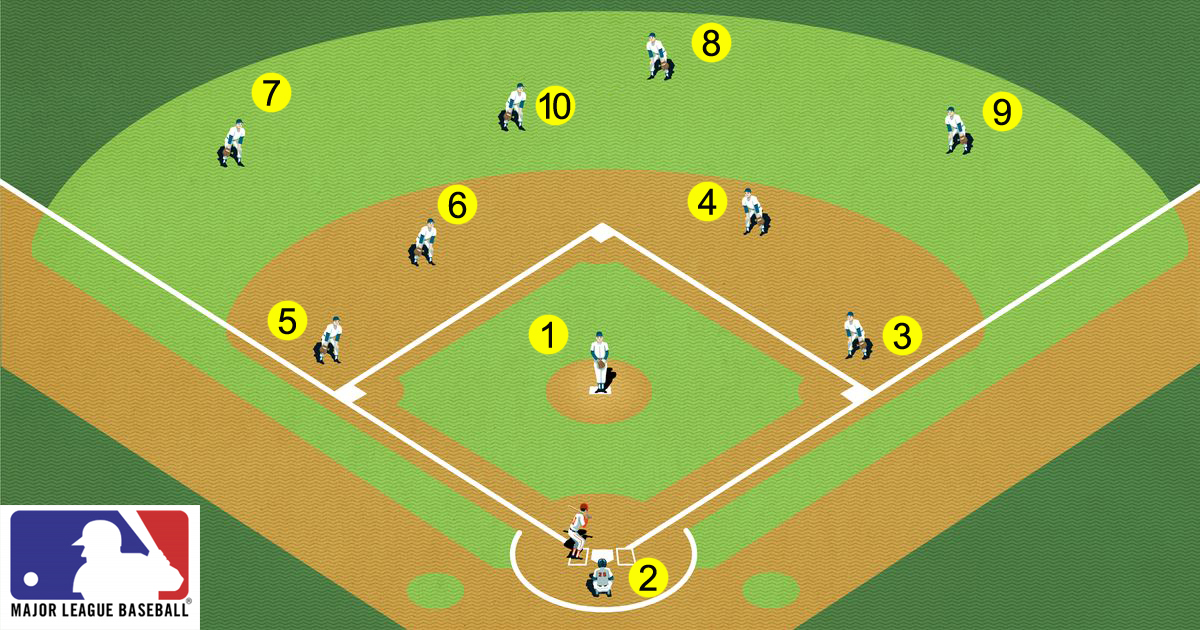
It is by no means hyperbole to state in no unequivocal terms that the player’s union agreeing with the MLB commissioner and owners to institute this revolutionary addition of a tenth fielder is nothing less than, to quote MLB Commissioner Rob Manfred, “April Fools!”
Thank you. I’m here all season. Try the hotdogs.
Beefaroni Birthday
Beloved childhood comfort food leads to an annual ritual –
Beefaroni on my birthday
Updated 02/25/2022
The American Dream Come True: The immigrant who made it rich (and meaty.)
Chef Boyardee is a brand of canned pasta products. But once upon a time the real Chef Boyardee was the head chef at the five-star Plaza Hotel, near the corner of 5th Avenue and Central Park South, in New York City. where a room reservation today is $1050 per night. He is personally responsible for Americans associating “Italian food” with pasta and tomato sauce, most particularly spaghetti with meatballs. I only learned of his story quite recently, but the company he started during the Great Depression was a part of my life as long as I can remember.
Ettore Boiardi worked in restaurants in Italy near Bologna, starting at age eight. He his brother to America in the early 1900s, where he is reputed to have worked his way up in the Plaza’s kitchen to Head Chef.
Chef Boiardi oversaw two major dinners for President Woodrow Wilson, his second wedding, and a White House homecoming dinner for 2,000 World War I veterans. At some point he anglicized his name to Hector Boyardee, and opened a restaurant in 1926, at Woodland Avenue and East 9th Street, in Cleveland Ohio.
Il Giardino d’Italia was both popular and influential in popularizing what we now think of as Italian food in America. As demand for his recipes grew, the Boyardee brothers opened a factory in Pennsylvania for their Bolognese-style dishes, which families could prepare at home. Spaghetti and meatballs soon became a national dish of America as well as Italy.
During World War II, the factory made rations for the U.S. Army, and returned to normal but increased production in peacetime, retaining all of its employees. But they had an added advantage: the vacuum-sealed can and the machinery necessary to make it, thanks to the War Department. And that is how just about every canned food you can think of came into being.
The company was eventually swallowed up by corporate giants, as family businesses usually are, but Chef Boyardee remained a figurehead well into the 1970s.
Childhood Favorites
The fondest of my earliest memories concern eatable entities. From Play-Doh, which is rather bland but very salty, to Funny Face, a competitor of Kool-Aid that my mom would add to milk to trick me into drinking that calcium delivery device, I have vivid remembrances attached to many eating and drinking experiences.
My very oldest, dimmest memory is a view from my high chair, looking across some sort of food and out the kitchen to the front door some 40 feet away. It hovers in a corner of my mind; where it’s dark as nighttime and all the lights are off. There is a photo of me in that very seat on my 1st birthday. I assume the remembered event came a bit later.
When it comes to “real food,” there was my mother’s chili. Years later I sought out how she had made it, and was somewhat disappointed to learn it consisted of Campbell’s tomato soup with red beans, browned hamburger and about three pieces of raw onion per person. She didn’t even add the chili powder called for by the recipe on soup can.
Another favorite for me and my sister three years my junior was the macaroni and cheese made by our older sister when she would be babysitting us. Again, it proved a let down to learn it was simply boiled macaroni with a large brick of Velveeta melted throughout.
As my childhood comfort food pillars toppled one by one, only one has remained steadfast and forever satisfying. Chef Boyardee’s Beefaroni, part of this complete birthday feast.
Served in vintage Fiestaware!
2017’s Birthday Carbfest was just as grand.
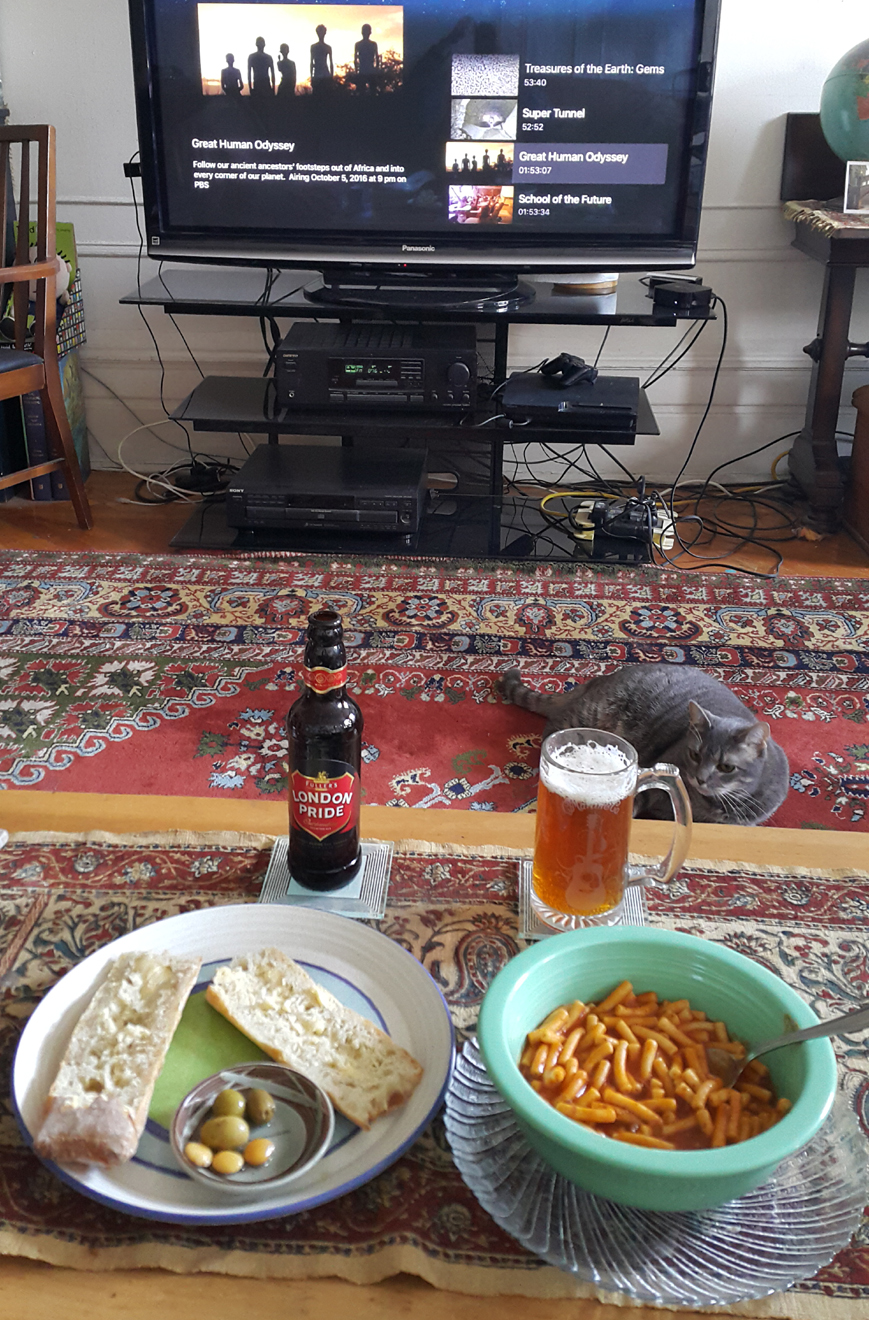
As was 2019’s.
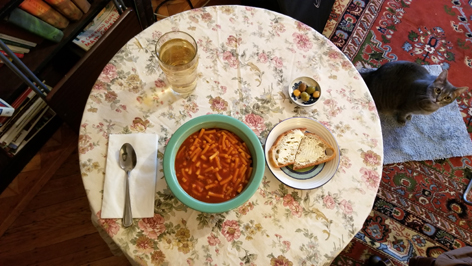
And 2022’s birthday provisions have been acquired. Bread, butter, and Beefaroni.
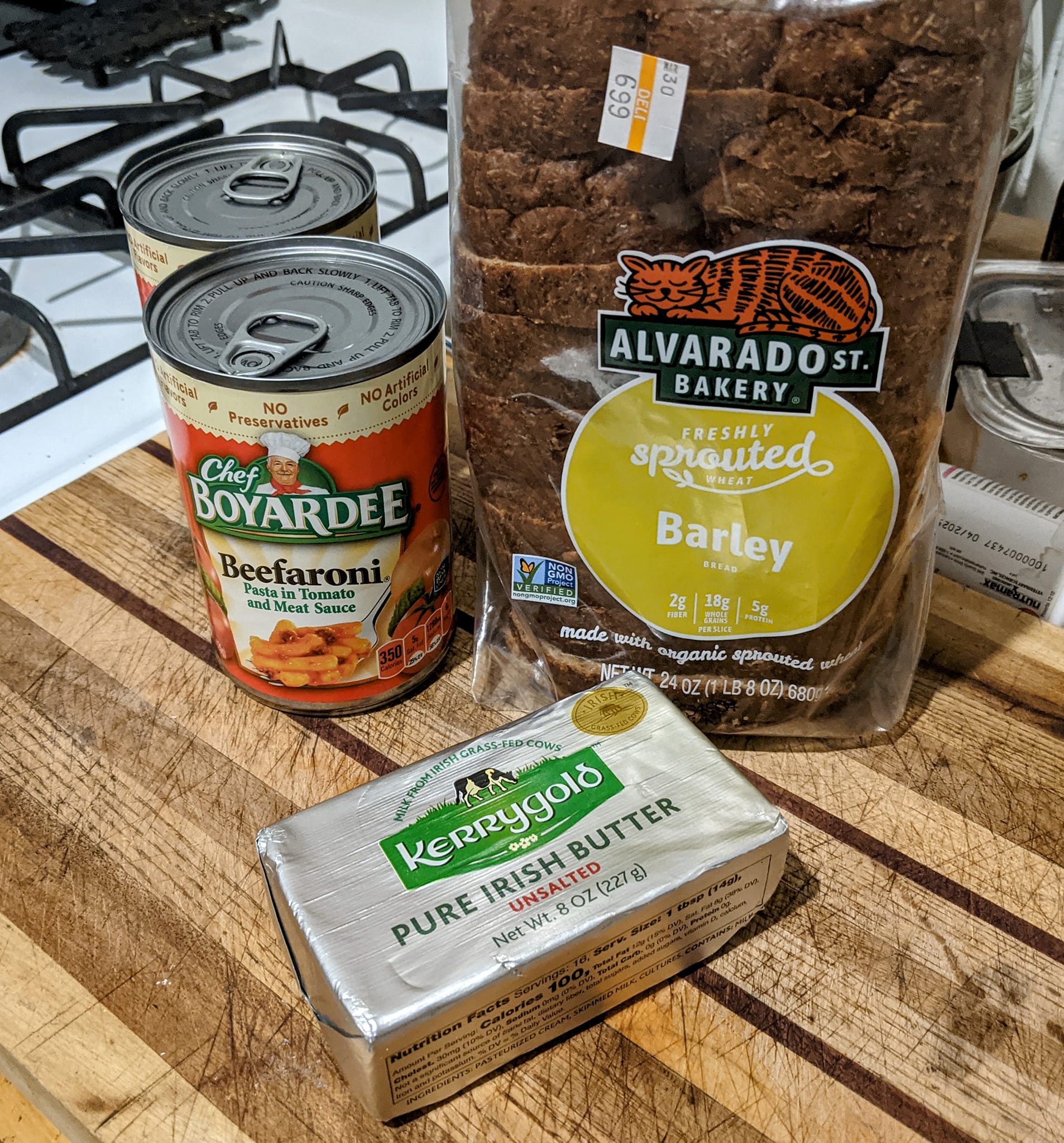
I have enjoyed Beefaroni on my birthday for years beyond count, rarely missing the opportunity, whether I have it for lunch, or supper, as we called dinner back in Ohio, or squeezing it in as a late night snack.
I do not now remember when Beefaroni entered my life. But I remember clearly splitting one 15 oz can with my little sister, on many occasions, after walking home from school for lunch. Now I often have two full cans just for me. But I cannot buy the large cans, as the consistency just isn’t the same. And even with the regular cans, I have to put a good dozen of them to my ear and give them a shake to find the two with the least amount of slosh. Otherwise the sauce is too soupy. OK, these days it is always too soupy. Sigh.
An Acquired Taste
A taste of the old country remains in Beefaroni, the humble tickler of the tongue’s carbs, fat, and protein sensors that remains every bit as yummy as it did when I was 8 years old.
I never liked canned pasta products, and still don’t with this one important exception. And when the ingredients consist of hamburger, macaroni and sauce, the sauce matters a great deal. It can be any brand, they all have this same fakey orange color and are far too sugary. While tis true Beefaroni has its share of sugar, or actually corn syrup these days, it has always stood apart, with a tomato sauce that actually tastes (a lot) like the genuine article.
I know some of my preference for Beefaroni is related to a pleasant sense memory from my boyhood. But it really is good. And it is not all that bad for you, with less sugar than many grocery store products that claim to be healthy.
Everyone has their favorite comfort foods from their childhood, and others have certain birthday foods of which they never grow tired. What are yours?
Here is a commercial I still remember clearly from long ago:
~
Return of the Highland Shatners – St. Patrick’s Day
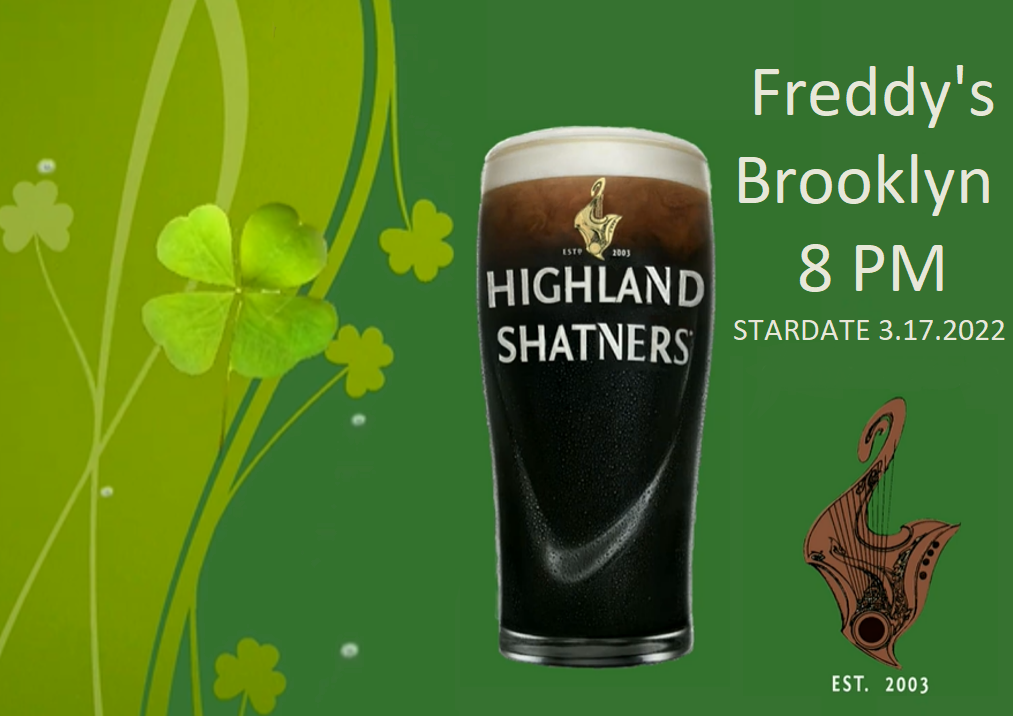
Freddy’s Bar in Brooklyn hosts the Highland Shatners
Purveyors of traditional and contemporary Celtic tunes and 1960s Paisley Pop!
We had to cancel our annual St. Pat’s show due to the 2019 NYC COVID lockdown. Last year, we had to do a short cyber set. But for 2022 we are BACK!
Let’s hope their awesome corned beef sandwiches are back for St. Pat’s too!!!
“The perfect bar!” – NY Times Home – Freddy’s Bar (freddysbar.com)
627 5th Ave, Brooklyn, NY 718-768-0131 – 8 PM SHARP!!! with Hot Burlesque later that evening!!!!
